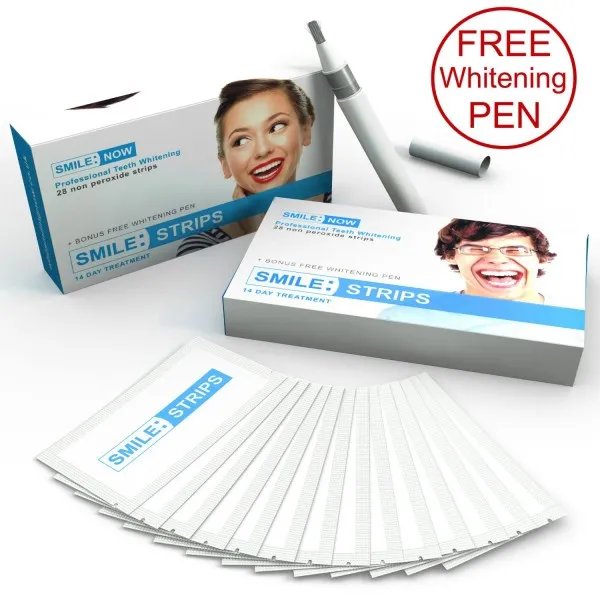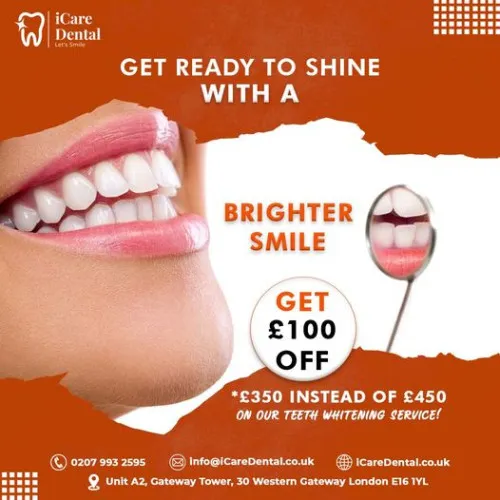Understanding UK Teeth Whitening
Teeth whitening has become increasingly popular in the UK, as people seek to enhance their smiles and boost their confidence. The desire for a brighter, more aesthetically pleasing smile drives the demand for various teeth whitening options. This comprehensive guide delves into the different aspects of teeth whitening available in the UK, helping you navigate the choices and achieve the dazzling smile you desire. From understanding the science behind teeth whitening to choosing the right method and maintaining your results, we’ll cover everything you need to know.
What is Teeth Whitening
Teeth whitening, also known as tooth bleaching, is a cosmetic dental procedure aimed at lightening the shade of your teeth. It involves using bleaching agents to break down stains and discoloration that have accumulated on the enamel surface. These stains can result from various factors, including aging, genetics, diet, smoking, and certain medications. The process can effectively remove both extrinsic stains (on the surface) and intrinsic stains (within the tooth structure), resulting in a visibly brighter and more youthful smile. Understanding the basics of teeth whitening is crucial before exploring available options.
The Science Behind Teeth Whitening

The active ingredient in most teeth whitening products is typically hydrogen peroxide or carbamide peroxide. These compounds penetrate the enamel and dentin of the teeth, breaking down the stain molecules. The process is essentially an oxidation reaction, where the peroxide releases oxygen radicals. These radicals react with the stain molecules, fragmenting them and making them less visible. The concentration of the peroxide, the duration of the treatment, and the method of application all influence the whitening effectiveness. Higher concentrations and longer treatment times generally lead to more significant whitening, but they also increase the risk of sensitivity.
Types of Teeth Whitening Available in the UK
The UK market offers a range of teeth whitening options to cater to diverse needs and preferences. These options vary in terms of cost, effectiveness, and application methods. It’s crucial to understand the different types available to make an informed decision. Consider factors like your budget, the severity of your stains, and your comfort level with different procedures. The main categories include professional treatments administered by dentists and over-the-counter products for at-home use. Each has its advantages and disadvantages.
Professional Teeth Whitening
Professional teeth whitening involves treatments performed by a qualified dental professional in a clinic setting. This approach offers the most potent whitening agents and is often the most effective. Professional treatments are generally faster than at-home methods and can provide dramatic results in a single session. Dentists can also assess your oral health and ensure that teeth whitening is suitable for you. They can address any underlying dental issues that might impact the outcome. The higher cost reflects the expertise, equipment, and quality of the materials used.
In-Office Teeth Whitening Procedures

In-office teeth whitening, often referred to as chairside bleaching, involves a dentist applying a high-concentration bleaching agent directly to your teeth. The gums are protected with a barrier to prevent irritation. A special light or laser may be used to accelerate the whitening process. The entire procedure typically takes about an hour, and you can often see significant improvements in a single visit. Your dentist can monitor the process and adjust the treatment as needed. The results are often more dramatic and noticeable compared to at-home methods, making it a popular choice for those seeking immediate and significant improvements. Consider the cost and convenience.
At-Home Teeth Whitening Kits
At-home teeth whitening kits are available through your dentist or over the counter, and offer a more convenient and budget-friendly option. These kits usually include custom-fitted trays or pre-filled strips containing a lower concentration of bleaching agents. The trays are designed to fit your teeth precisely, ensuring even coverage of the whitening gel. You’ll wear the trays for a specified period daily, as directed by your dentist or the product instructions. While results may take longer to achieve compared to in-office treatments, at-home kits can still deliver noticeable improvements with consistent use. Follow all instructions carefully to minimize the risk of sensitivity or other side effects.
Over-the-Counter Whitening Products
Over-the-counter (OTC) teeth whitening products are readily accessible at pharmacies and supermarkets. These products include whitening toothpaste, strips, and mouthwashes. OTC products typically contain lower concentrations of bleaching agents, making them less potent than professional options. While they can help remove surface stains and slightly brighten your teeth, they usually don’t provide dramatic results. The effectiveness of OTC products can vary depending on the individual and the severity of the stains. It’s essential to read the product instructions carefully and use them as directed. Consult with your dentist for advice if you have any concerns.
Choosing the Right Teeth Whitening Option

Selecting the ideal teeth whitening method involves considering your personal circumstances and preferences. Professional whitening is generally the most effective, but it also tends to be the most expensive. If you’re seeking rapid and dramatic results, in-office whitening may be the best choice. At-home kits are a more budget-friendly option, allowing you to whiten your teeth at your convenience. Over-the-counter products are suitable for minor stain removal and maintenance but may not be effective for significant discoloration. Consulting with your dentist is highly recommended before making any decisions, as they can assess your oral health and offer personalized advice.
Factors to Consider Before Whitening
Before undergoing any teeth whitening procedure, several factors need consideration. Your dentist will examine your teeth and gums to ensure that whitening is a safe and suitable option. They will check for existing dental work, such as fillings or crowns, as whitening agents only affect natural tooth enamel. The level of staining and the underlying cause of the discoloration also play a significant role in determining the most effective treatment. You should also consider any sensitivity to whitening agents and discuss potential side effects with your dentist. Realistic expectations regarding the results are important, as individual outcomes vary. Consider the cost.
Benefits of a Bright Smile
A bright, white smile offers numerous benefits that extend beyond mere aesthetics. A brighter smile can significantly boost your self-confidence and improve your overall self-esteem. It can make you feel more attractive and approachable, positively impacting your social interactions. Research shows that people with whiter teeth are often perceived as more successful, friendly, and trustworthy. A confident smile can also have a positive influence on your professional life, helping you make a good first impression in interviews and meetings. Beyond the social and professional advantages, a healthy, bright smile contributes to your overall well-being and can be a source of joy.
Maintaining Your White Smile

Maintaining your newly whitened smile requires diligent care and attention. After teeth whitening, it’s crucial to practice good oral hygiene. Brush your teeth twice daily with a whitening toothpaste, and floss regularly to remove plaque and food particles. Avoid or minimize consumption of stain-causing foods and drinks, such as coffee, tea, red wine, and dark-colored berries. If you do consume these items, brush your teeth soon afterward. Regular dental check-ups and cleanings are also essential for maintaining your results and ensuring your teeth remain healthy and bright. Consider using a touch-up whitening treatment to maintain your desired shade.
Oral Hygiene Practices
Consistent and proper oral hygiene is key to maintaining a bright smile and healthy teeth. Brush your teeth for two minutes, twice a day, using a soft-bristled toothbrush and fluoride toothpaste. Make sure to brush all surfaces of your teeth, including the front, back, and chewing surfaces. Floss daily to remove plaque and food particles from between your teeth and along the gum line. Consider using an antimicrobial mouthwash to further reduce bacteria in your mouth. Regular dental check-ups and professional cleanings are also essential for removing plaque and tartar that you can’t remove on your own. Maintain regular oral hygiene practices.
Avoiding Stain-Causing Foods and Drinks
Certain foods and beverages are notorious for staining teeth and can compromise your whitening efforts. Coffee, tea, and red wine contain tannins, which can cause staining. Dark-colored sodas and fruit juices also contribute to discoloration. Berries, such as blueberries and blackberries, have pigments that can stain teeth. Smoking or using tobacco products is another major factor that causes teeth staining. Limit your consumption of these items to preserve your bright smile. If you do consume these items, rinse your mouth with water afterward, or brush your teeth to minimize staining. Make the lifestyle change.
Cost of UK Teeth Whitening

The cost of teeth whitening in the UK varies significantly depending on the method chosen and the dental practice. In-office whitening procedures are generally more expensive due to the expertise of the dentist, the equipment used, and the potency of the whitening agents. At-home whitening kits provided by your dentist are generally less costly than in-office treatments but still offer professional-grade results. Over-the-counter products are the most affordable option. It’s important to remember that the cost isn’t the only factor to consider. The effectiveness of the treatment, your individual needs, and your oral health are also important. You should always prioritize quality and safety.
Finding a Reputable UK Teeth Whitening Website
When searching for teeth whitening services online, it’s important to choose a reputable UK teeth whitening website. Look for websites that provide clear information about their services, qualifications, and prices. Check the dentist’s credentials and experience. Read patient reviews and testimonials to assess their satisfaction levels. Ensure that the website complies with relevant data privacy regulations. A trustworthy website will also offer comprehensive details about the whitening process, potential risks, and aftercare instructions. Be cautious of websites that make unrealistic promises or offer excessively low prices. A consultation with a qualified dental professional is always recommended to ensure the treatment is safe and suitable for your individual needs.
